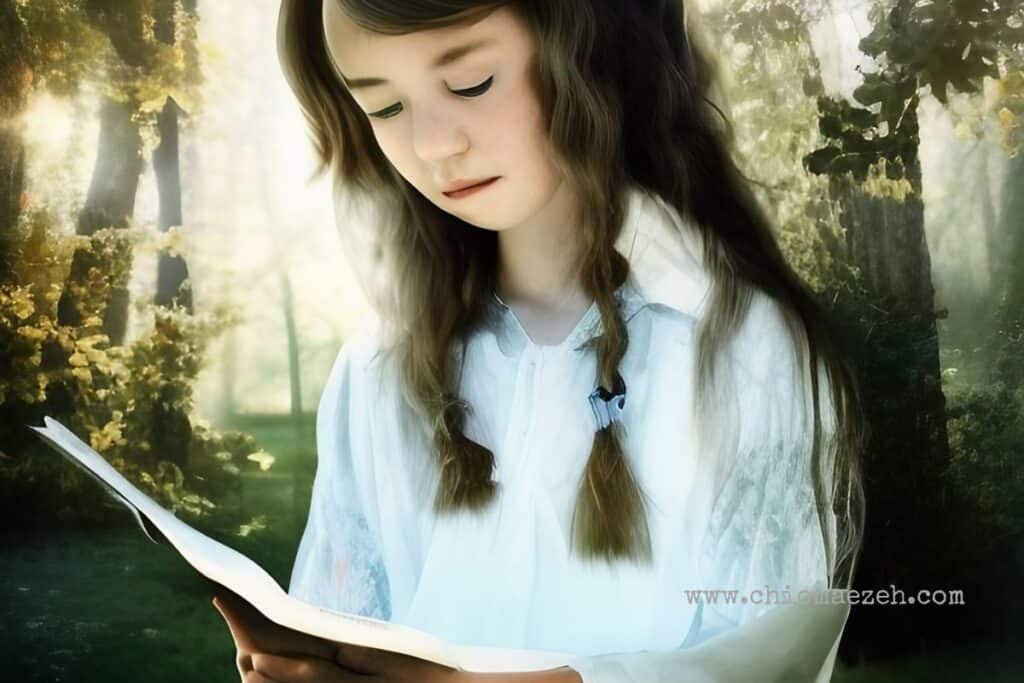How Does Dialogue Affect the Plot of a Story?
If you’re a fan of well-crafted fiction, you’ve probably experienced the magic of engaging dialogue. As a writer, you may already know that dialogue is an essential tool for shaping your characters and setting the pace of your story.
But did you know that dialogue can also significantly affect the plot of your story? Well, it turns out that dialogue does much more—it actually shapes the plot in fascinating ways.
In this article, we’ll dive into how dialogue can move the plot forward, create tension, reveal secrets, develop subplots, foreshadow future events, and even tie everything up with a neat little bow.

Let’s Talk
Are you a writer aspiring to pen a masterpiece that never fails to captivate? Look no further. Reach out to us and uncover how we can help you to take your writing to unprecedented heights!

Does Dialogue Affect the Plot of a Story?
Dialogue certainly plays a major role in shaping the plot of a story. It’s like the secret sauce that spices up your narrative, keeping readers hooked and eager for more. Let’s take a look at some of the ways dialogue works its magic on a story’s plot:
- Moves the plot forward: Dialogue helps push the story forward by revealing important details or sparking actions that keep the plot rolling. It’s like a gentle nudge (sometimes a big shove 🙂 ) that gets the story going.
- Creates tension and conflict: Through arguments or misunderstandings, dialogue can create that kind of conflict and tension in a story, making it more exciting for readers.
- Plot twists: Dialogue is an awesome way to unveil hidden secrets or jaw-dropping plot twists that can change the game.
- Develop Subplots: Dialogue helps writers explore and develop subplots (side stories), those extra layers of intrigue that make a story richer and more interesting. They might involve secondary characters or weave in and out of the main plot.
- Foreshadowing: Through dialogue, writers can sneak in hints of what’s to come. This builds anticipation and suspense, keeping readers guessing.
- Bring closure and resolution: Finally, dialogue can help bring a story to a satisfying close by wrapping up loose ends and resolving conflicts. It’s that warm feeling you get when everything comes together, and you know the characters have learned and grown from their experiences.
So, essentially, dialogue impacts a story by moving the plot forward, creating conflict, revealing secrets, developing subplots, foreshadowing events, and providing closure.

How Dialogue Affect The Plot Of A Story
1. Moves the Plot Forward
One of the primary purposes of dialogue is to move the story forward. Conversations between characters can reveal vital information, trigger actions/reactions, or create turning points that move the plot in new directions.
Example:
Imagine a detective story in which the protagonist, Detective Brown, interviews a key witness, Mrs. Smith. During their conversation, Mrs. Smith reveals a crucial piece of information that leads to the identification of the main suspect:
Detective Brown: “Did you notice anything unusual that night, Mrs. Smith?”
Mrs. Smith: “Now that you mention it, I did see a strange car parked across the street. It had a distinctive dent on the left rear door.”
This exchange of dialogue provides critical information that helps Detective Brown to identify the suspect’s vehicle. As a result, the plot advances, and the story moves forward.
2. Creates Conflict and Tension
Dialogue can be effective in creating conflict and tension within a story. Disagreements, arguments, and confrontations between characters can drive the plot and keep the reader engaged.
Example:
In a family drama, tensions rise when siblings Jane and Peter argue over their father’s estate:
Jane: “You always were Dad’s favorite, and now you want to take everything from me!”
Peter: “That’s not true, Jane. I just want to make sure his assets are divided fairly.”
The dialogue between Jane and Peter not only reveals their conflicting desires but also adds an emotional layer to the story. The conflict creates tension that keeps the reader invested in the outcome of the dispute.
3. Reveals Secrets and Plot Twists
Well-crafted dialogue can also be used to reveal secrets, surprises, or plot twists that keep the reader guessing and engaged in the story. By weaving these revelations into the dialogue, writers can create memorable moments that have a significant impact on the plot.
Example:
In a suspenseful thriller, protagonist Ava confronts her close friend, Lisa, about a series of mysterious events. During their conversation, Lisa reveals a shocking secret:
Ava: “I don’t understand why all these strange things are happening to me, Lisa.”
Lisa (hesitating): “I never meant for any of this to happen, Ava. I… I was the one who sent those anonymous letters.”
Lisa’s confession introduces an unexpected twist in the story that changes the dynamics between the two characters and the course of the plot. This dialogue-driven revelation keeps the reader on their toes and eager to discover what happens next.
4. Developing Subplots
Dialogue can also be used to develop subplots that enrich the story and add depth to the main plot. By introducing new characters, relationships, or challenges through dialogue, writers can create subplots that complement the primary storyline.
Example:*
In a fictitious romance novel, the main character, Emily, discusses her new job with her friend, Sarah. During their conversation, Emily mentions her charming coworker, Tom:
Emily: “My new job is great, Sarah, but there’s this guy, Tom, who’s been really friendly. I can’t help but feel drawn to him.”
Sarah: “Oh, really? What about your boyfriend, Mark?”
Emily: “I don’t know. Things haven’t been the same with Mark lately.”
This dialogue introduces a potential love triangle subplot that adds complexity to the main romance storyline. The conversation between Emily and Sarah piques the reader’s curiosity about how Emily’s feelings for Tom will affect her relationship with Mark and the overall story.
5. Foreshadowing Future Events
Dialogue can also be a powerful tool for foreshadowing future events in the story. Planting subtle hints or clues in the characters’ conversations can create a sense of anticipation and intrigue.
Example:
In a science fiction story, two scientists, Dr. Patel and Dr. Kim, discuss their latest invention:
Dr. Patel: “This new technology could revolutionize the way we live, but I worry about the potential consequences.”
Dr. Kim: “True, but we can’t predict the future. We can only do our best to ensure it’s used responsibly.”
The dialogue between both scientists hints at potential future complications that could arise from their invention. This foreshadowing creates a sense of anticipation that makes the reader curious about what these consequences might be.
6. Providing Closure and Resolution
Finally, dialogue can be used to provide closure and resolution to the story. Conversations between characters can help wrap up loose ends, resolve conflicts, or clarify unanswered questions, ensuring a satisfying conclusion for the reader.
Example:
In a mystery story, the detective, Inspector Grey, explains the solution to the perplexing case to his assistant, Watson:
Inspector Grey: “You see, Watson, the butler couldn’t have committed the murder. The real killer was the gardener, who cleverly framed the butler to cover his tracks.”
Watson: “Incredible, Inspector! I never would have suspected the gardener.”
The dialogue between Inspector Grey and Watson not only reveals the solution to the mystery but also provides a sense of closure for the reader. The conversation ties up loose ends and concludes the story satisfactorily.
How To Use Dialogue To Plot Your Story: Template
Dialogue is a powerful tool that can significantly impact the plot of a story. Here is a template you can use to plot your own story:
Free Template For Authors
1. Moving the Plot Forward
- [Identify key moments in your story where dialogue can provide essential information or trigger actions that advance the plot.]
- [Make a list of the critical pieces of information that need to be revealed through dialogue.]
- [Ensure that these dialogue-driven revelations are distributed throughout the story, keeping the reader engaged and the plot moving forward.]
- Hint: In a story about a heist, the characters need to discuss their plan. This dialogue moves the plot forward:
- Mike: “We’ll hit the bank at 2 pm, just after the guards change shifts.”
- Jen: “Alright, I’ll be the getaway driver. Make sure you’re out by 2:15 sharp.”
2. Creating Conflict and Tension
- [Determine which characters will have conflicting goals, desires, or opinions in your story.]
- [Develop scenes where these characters engage in conversations that highlight their disagreements or confrontations.]
- [Use dialogue to create tension and conflict that drives the story forward and keeps the reader engaged.]
- Hint: In a family drama, siblings argue over their late father’s inheritance, revealing their conflicting goals:
- Sam: “Dad wanted me to have the house. He told me so on his deathbed.”
- Lucy: “That’s not fair! We should sell it and split the money.”
3. Revealing Secrets and Plot Twists
- [Identify moments in your story where a secret, surprise, or plot twist can be revealed through dialogue.]
- [Plan conversations between characters that build up to the revelation, creating anticipation and intrigue.]
- [Craft the dialogue in a way that the revelation feels natural and surprising, making a significant impact on the plot.]
- Hint: In a mystery story, a character reveals a secret that changes the course of the investigation:
- Detective: “Your alibi doesn’t add up, Mr. Smith.”
- Mr. Smith: “Alright, I wasn’t at home. I was meeting my secret lover, but I didn’t kill him!”
4. Developing Subplots
- [Determine what subplots can complement your main storyline and add depth to your story.]
- [Plan conversations between characters that introduce new relationships, challenges, or events related to these subplots.]
- [Ensure that the subplots are interwoven with the main plot through dialogue, creating a cohesive and engaging narrative.]
- Hint: In a romance story, the protagonist’s best friend starts a new relationship that becomes a subplot:
- Anna: “Guess what? I met someone last night, and we really hit it off!”
- Protagonist: “That’s fantastic! Tell me all about him.”
5. Foreshadowing Future Events
- [Identify moments in your story where subtle hints or clues can be planted in the characters’ dialogue to foreshadow future events.]
- [Craft conversations that contain these foreshadowing elements, making them feel natural and unobtrusive.]
- [Use dialogue to create a sense of anticipation and intrigue, making the reader curious about what these future events might entail.]
- Hint: In a story, characters discuss the potential consequences of their new invention, foreshadowing future problems:
- Dr. Chen: “This device could change the world, but what if it falls into the wrong hands?”
- Dr. Lee: “We’ll just have to make sure it doesn’t.”
6. Providing Closure and Resolution
- [Determine which loose ends, conflicts, or unanswered questions need to be resolved by the end of your story.]
- [Plan conversations between characters that address these issues and provide a sense of closure and resolution.]
- [Craft dialogue that ties up these loose ends and offers a satisfying conclusion for the reader.]
- Hint: In a coming-of-age story, the protagonist reconciles with their estranged parent, resolving their conflict:
- Protagonist: “Dad, I’m sorry I’ve been so distant. I want to make things right.”
- Dad: “I’m sorry, too. Let’s start fresh and rebuild our relationship.”
The template gives guidance on how you can use dialogue to move the plot forward, create tension, reveal secrets, develop subplots, foreshadow events, and provide closure. You can effectively use it to plot your story.
Story Example: Using Dialogue To Plot A Story
So, let’s explore a story example I came up with. It’s a short mystery story, but let’s see how we can apply this template to crafting the plot using dialogue.

Story Title: The Lost Melody
Plot Summary:
In a small town, a young aspiring musician named Lily discovers a hidden sheet of music in her late grandmother’s belongings. The mysterious melody has a haunting beauty that captivates Lily, and she becomes determined to learn its origin. As Lily investigates, she uncovers long-buried secrets, tangled relationships, and a tragic love story, ultimately leading her to a life-changing revelation.

Moving the Plot Forward:
Upon finding the hidden sheet of music, Lily excitedly shows it to her best friend, Emma.
Lily: “Emma, look what I found in Grandma’s old trunk! It’s a beautiful piece of music, but there’s no title or composer.”
Emma: “That’s strange. Maybe you should do some research and find out where it came from.”
Creating Conflict and Tension:
As Lily delves deeper into the mystery, she talks to her mother, who is initially reluctant to discuss her grandmother’s past.

Lily: “Mom, do you know anything about this sheet music? It belonged to Grandma.”
Mom: “That’s a part of her life we don’t talk about. Just let it go.”
Revealing Secrets and Plot Twists:
Lily learns from her grandmother’s friend that the melody was composed by her grandmother’s long-lost lover, who disappeared under mysterious circumstances.
Mrs. Jenkins: “Oh, I remember that song. Your grandmother wrote it with her lover, Thomas. He vanished one day, and no one ever knew what happened to him.”
Developing Subplots:
Throughout her investigation, Lily grows closer to a local librarian, Jake, who helps her uncover the truth. Their relationship blossoms into a romantic subplot.
Jake: “Lily, I found a newspaper article about Thomas. He was a talented musician too, but he had a troubled past.”
Lily: “Thank you, Jake. I couldn’t have done this without you.”
Foreshadowing Future Events:
Lily and Jake find a letter hinting that Thomas might have left town to protect her grandmother from his dark past.
Thomas (in the letter): “My love, I must leave to keep you safe. Remember our melody and know that I will always love you.”
Providing Closure and Resolution
In the end, Lily discovers that Thomas had a secret child, and it turns out that Jake, her love interest, is a descendant of Thomas. This revelation brings a sense of closure and unites the past with the present.
Lily: “Jake, can you believe it? You’re Thomas’s great-grandson! Our love for music brought us together, just like it did for my grandmother and Thomas.”
The Lost Melody is a heartwarming tale of love, loss, and the power of music. We can see how we’ve used dialogue to advance the plot, create tension, reveal secrets, develop subplots, foreshadow events, and provide closure.
Final Notes: How Does Dialogue Affect the Plot
We’ve explored the many ways dialogue can shape a story’s plot, from creating tension and revealing secrets to developing subplots and providing closure. It’s clear that dialogue is much more than just words on a page—it’s the lifeblood that pumps energy and emotion into our stories.
As you continue your writing journey, remember to harness the power of dialogue to craft engaging, dynamic narratives. Don’t be afraid to let your characters’ voices shine and guide your story’s plot. After all, it’s through these lively conversations that your characters come to life and your story truly unfolds.


![What Is Writing? [Definition, History, Types, Utensils, Examples]](https://chiomaezeh.com/wp-content/uploads/2023/03/what-is-writing-1-768x512.jpg)

![What Are The Elements Of A Story? [Explained With Examples]](https://chiomaezeh.com/wp-content/uploads/2023/02/Elements-of-a-story-768x512.jpg)
![What is Dialogue in a Story? [Meaning, Types, Examples]](https://chiomaezeh.com/wp-content/uploads/2023/03/dialogue-in-a-story-1-768x512.jpg)
![What Are The 10 Rules Of Dialogue Punctuation? [Mandatory]](https://chiomaezeh.com/wp-content/uploads/2023/03/rules-of-dialogue-punctuation-768x512.jpg)